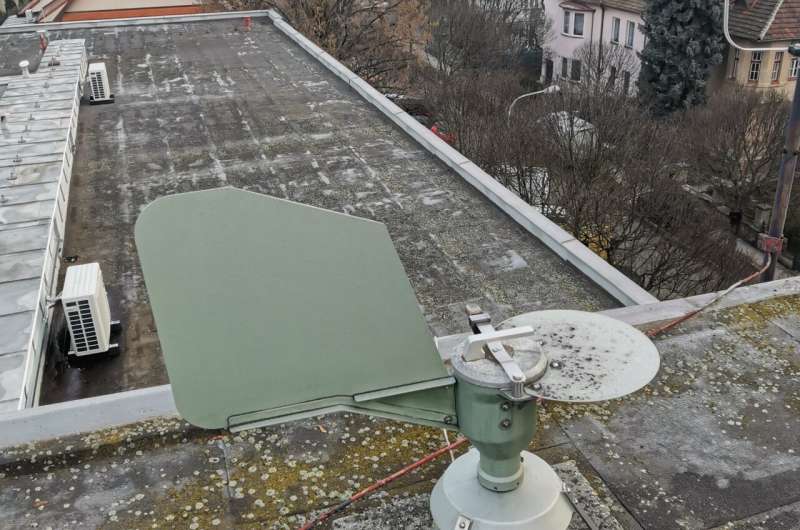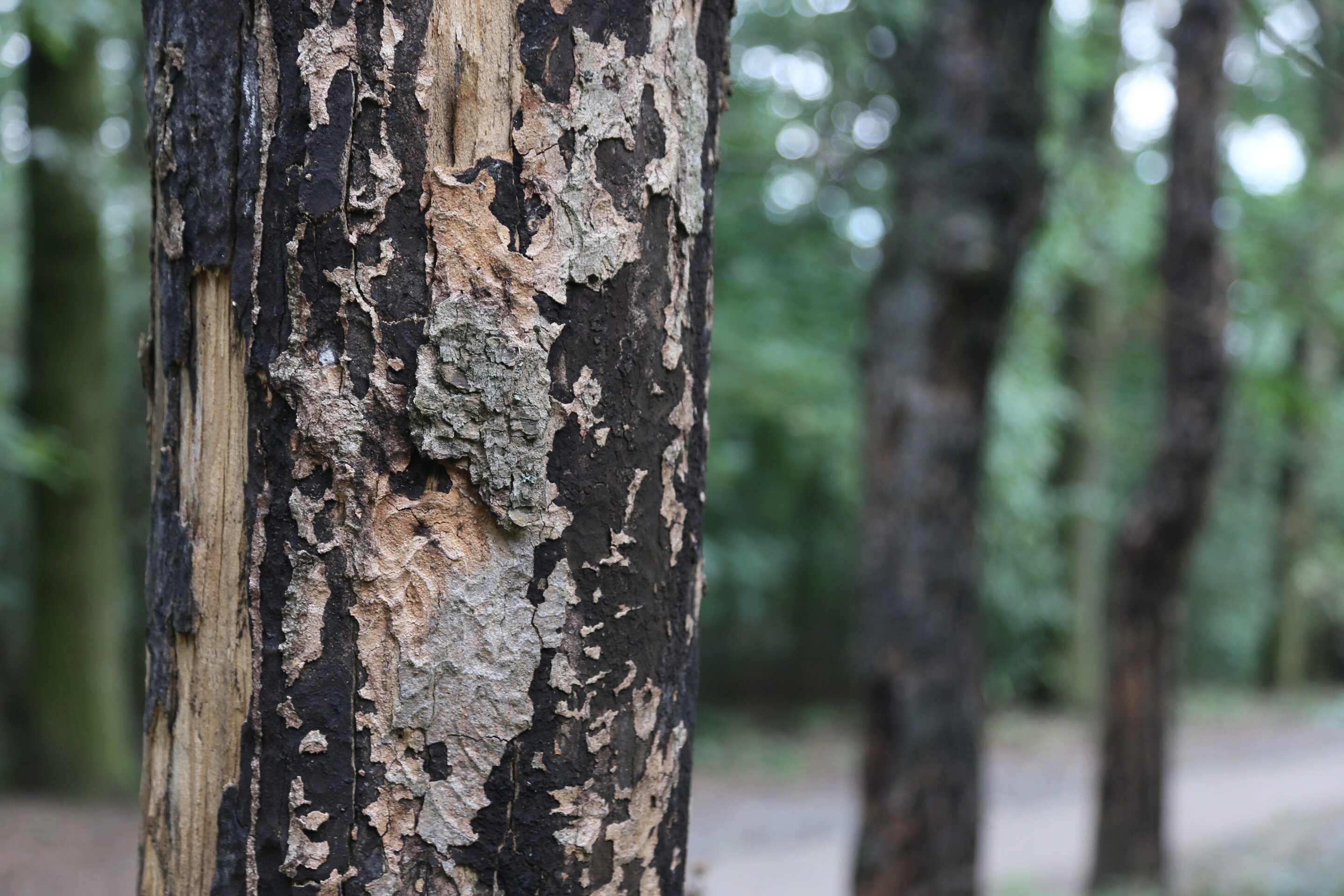Emerging infectious diseases can threaten not only humans but also other species. With global trade, tree parasites are often accidentally introduced to Europe, where they can remain undetected for long periods. Infected trees may look healthy for some time, which makes disease control difficult. Sooty bark disease (SBD) on maples is caused by a microscopic fungus called Cryptostroma corticale. The fungus can suddenly infect the trees, causing the creation of brown-black masses of “soot” under the peeling bark. The “soot” contains spores, which are harmful to wounded trees and can cause hypersensitivity pneumonitis in humans. Phytopathologists from six countries have developed a new DNA-based diagnostic method to detect and monitor the pathogen in air samples using volumetric air samplers. The method was published in the open-access journal NeoBiota.
“Forms of life of parasitic fungi are extremely diverse and very often practically invisible,” says Dr. Miloň Dvořák of the Department of Forest Protection and Wildlife Management at Mendel University in Brno, Czechia. Trees infected with the pathogenic fungus may appear healthy for some time, but stress can trigger the disease. The fungus was probably introduced to Europe during World War II and has been reported more frequently over the last 20 years.

Volumetric air samplers can suck the air against a piece of sticky tape that can be analyzed for DNA. Data from over 600 stations united by the European Aeroallergen Network (EAN) can be used to monitor SBD disease in its early stages. The HOMED team contacted their national EAN collaborators and processed the samples with molecular techniques (real-time PCR). The sensitive detection method found the “sooty” fungus in air samples from countries where the disease has been reported, and in a more detailed study in France, the pathogen was found in the air 310km from the diseased trees. This result suggests that the fungus can disperse over long distances by wind. The researchers hope that early aerial detection of C. corticale in disease-free countries could help implement more efficient measures for SBD detection and eradication.
More information: Elodie Muller et al, Conditions of emergence of the Sooty Bark Disease and aerobiology of Cryptostroma corticale in Europe, NeoBiota (2023). DOI: 10.3897/neobiota.84.90549
Citation: ‘Sooty bark disease,’ harmful for maples and humans, can be monitored by pollen sampling stations (2023, June 5) retrieved 6 June 2023 from https://phys.org/news/2023-06-sooty-bark-disease-maples-humans.html
This document is subject to copyright. Apart from any fair dealing for the purpose of private study or research, no part may be reproduced without the written permission. The content is provided for information purposes only.
Denial of responsibility! TechCodex is an automatic aggregator of the all world’s media. In each content, the hyperlink to the primary source is specified. All trademarks belong to their rightful owners, and all materials to their authors. For any complaint, please reach us at – [email protected]. We will take necessory action within 24 hours.

Jessica Irvine is a tech enthusiast specializing in gadgets. From smart home devices to cutting-edge electronics, Jessica explores the world of consumer tech, offering readers comprehensive reviews, hands-on experiences, and expert insights into the coolest and most innovative gadgets on the market.


